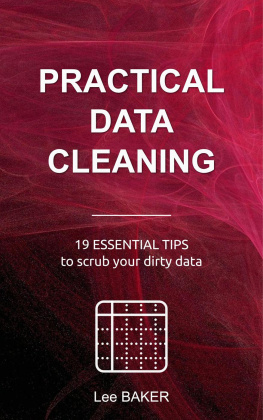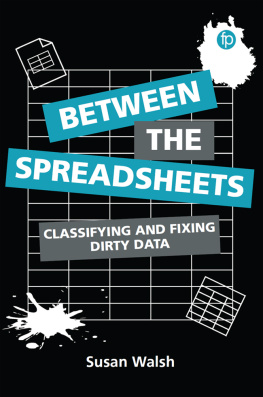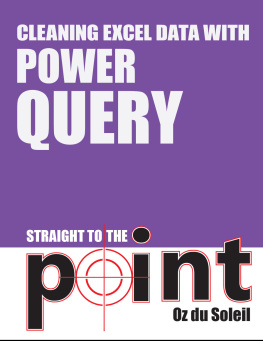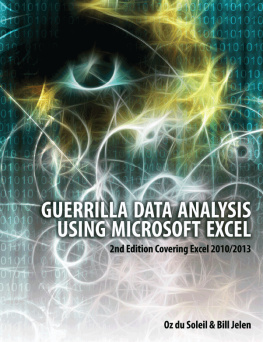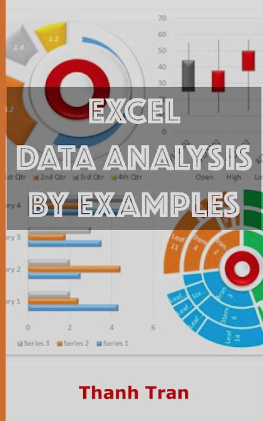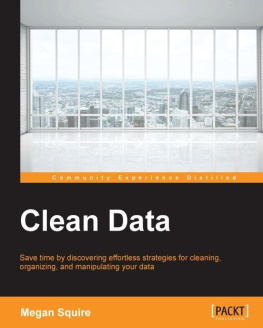So you just got handed a new data file. Its tempting to just load it up into your favorite visualization tool. But your first stop should be to determine the quality of your data.
The truth is, most data has at least a few data quality problems. The data may have been collected recently, or maybe it came from an application.
Youd have good reason to check its quality before proceeding.
Data with quality issues can often operate just fine in its native application. It could be a duplicate record that nobody ever accesses, they might not even know it's there.. The other reason is that most application data is looked at a small sliver at a time. One account or customer at a time. Rarely does anyone export the entire dataset and look at it in aggregate. Over time, duplicate and inaccurate records build up and are rarely purged.
Poor data quality is the kryptonite of good reporting and credible analytics. If your data isnt of adequate quality, at worst you wont be able to proceed any further. At best, others may question your conclusions if you cant show the right attention to data quality.
In this book, Ill use terms like Company and Business. But these techniques really apply to any organization that works with data. Kindly insert schools/governments/ not-for-profits/religious organizations/political campaigns/etc. as needed.
Ill also use Customers a lot, but substitute your term of choice for the people and persons you interact with. You may call them subscribers, members, voters, students, associates or citizens. Theyre all Person data types.
Chapter 2: Why Clean Data?
Data cleansing is the process of spotting and correcting inaccurate data. Organizations rely on data for many things, but few actively address data quality. Whether its the integrity of customer addresses or ensuring invoice accuracy. Ensuring effective and reliable use of data can increase the intrinsic value of the brand. Business enterprises must assign importance to data quality.
A data driven marketing survey conducted by Tetra data found that 40% of marketers do not use data to its full effect. Managing and ensuring that the data is clean can provide significant business value.
Improving data quality can eliminate problems like expensive processing errors, manual troubleshooting, and incorrect invoices. Data quality is also a way of life because important data like customer information is always changing and evolving.
Business enterprises can achieve a wide range of benefits by cleansing data and managing quality which can lead to lowering operational costs and maximizing profits.
Who are the heroes who allow the organization to seize and enjoy all these benefits? I affectionately refer to these poor souls as PWCDs , or People Who Clean Data .
These brave people, and hopefully you are reading this because you hope to be one of them, are the noblest. They often get little recognition even though they clean up the messes of hundreds, if not thousands of other people every day. They are the noble janitors of the data world. And I salute them.
Top 5 Benefits of Data Cleaning
Improve the Efficiency of Customer Acquisition Activities
Business enterprises can significantly boost their customer acquisition and retention efforts by cleansing their data regularly. With the high throughput of the prospecting and lead process, filtering, cleansing, enriching having accurate data is essential to its effectiveness. Throughout the marketing process, enterprises must ensure that the data is clean, up-to-date and accurate by regularly following data quality routines. Clean data can also ensure the highest returns on email or postal campaigns as chances of encountering outdated addresses or missed deliveries are very low. Multi-channel customer data can also be managed seamlessly which provides the enterprise with an opportunity to carry out successful marketing campaigns in the future as they would be aware of the methods to effectively reach out to their target audience.
Improve Decision Making Processes
The cornerstone of effective decision making in a business enterprise is data. According to Sirius Decisions, data in an average B2B organization doubles every 12-18 months and though the data might be clean initially, errors can creep in at any time. In fact, in nearly all businesses where data quality is not managed, data quality decay is constantly at work. Each time new records are added; duplicates may be created. Things happening outside your organization, like customers moving and changing emails and telephone numbers will, over time, degrade data quality.
Yet the majority of enterprises fail to prioritize data quality management, or even acknowledge they have a problem! In fact, many of them dont even have a record of the last time quality control was performed on their customers data. More often than not they merely discard or ignore data they believe to be of poor quality, and make decisions through other means. Here you can see that data quality is a massive barrier toward digital transformation and business intelligence, much less every companys desire to become more Data Driven.
Accurate information and quality data are essential to decision making. Clean data can support better analytics as well as all-round business intelligence which can facilitate better decision making and execution. In the end, having accurate data can help business enterprises make better decisions which will contribute to the success of the business in the long run.
Streamline Business Practices
Eradicating duplicate and erroneous data can help business enterprises to streamline business practices and avoid wasteful spending. Data cleansing can also help in determining if particular job descriptions within the enterprise can be changed or if those positions can be integrated somewhere else. If reliable and accurate sales information is available, the performance of a product or a service in the market can be easily assessed.
Data cleansing along with the right analytics can also help the enterprise to identify an opportunity to launch new products or services into the market at the right time. It can highlight various marketing avenues that the enterprises can try. In practically any other business process you can name, decisions are made every day, some large, but many small. It is this systematic pushing of high-quality information down the chain of command, into the hands of individual contributors that helps them improve decisions made at all levels of the organization. Called Operational Intelligence, it is used more commonly for quick lookups and to inform the thousands of decisions that are made every day inside the organization.
Increase Productivity
Having a clean and properly maintained enterprise dataset can help organizations ensure that the employees are making the best use of their time and resources. It can also prevent the staff of the enterprise from contacting customers with out-of-date information or create invalid vendor files in the system by conveniently helping them to work with clean records thereby maximizing the staffs efficiency and productivity. High quality data helps reduce the risk of fraud, ensuring the staff has access to accurate vendor or customer data when payments or refunds are initiated.




